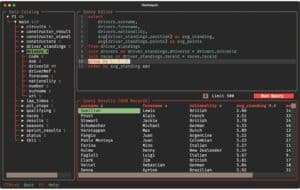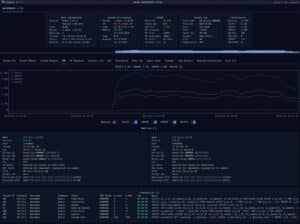Integrating artificial intelligence (AI) into core enterprise operations is no longer optional for organizations seeking scalability, operational efficiency, and competitive advantage. For a CTO or CIO, the question is not if to adopt AI, but how to implement it securely, with measurable impact, and in alignment with enterprise architecture principles.
Industry leaders, including OpenAI and automation experts, recommend a lean-to-scale approach: start with low-risk pilots, integrate AI into business workflows via automation, and build internal capabilities that evolve into augmented decision-making ecosystems.
1. Initial Assessment and Strategic Alignment
A successful AI strategy begins with a clear alignment between business objectives and technical feasibility:
- Process inventory: Identify repetitive tasks, decision bottlenecks, and high-impact areas.
- Data readiness: Assess the availability, quality, and security classification of data.
- Architectural compatibility: Review APIs, integration middleware, and infrastructure to avoid unnecessary reengineering.
For CTOs and CIOs, this initial stage should be part of the enterprise technology roadmap, prioritizing quick wins that can be scaled with confidence.
2. Selecting the Right AI Model
The AI model ecosystem is diverse. Selection must consider:
- Context capacity (context window length for long documents)
- Security and compliance (GDPR, SOC 2, HIPAA, ISO 27001)
- Integrability (APIs, SDKs, compatibility with hybrid/multi-cloud environments)
- Cost per token and predictability of spend
- Data sovereignty requirements
| AI Model | Max Context | Primary Focus | Key Integrations | Security & Privacy |
|---|---|---|---|---|
| ChatGPT (OpenAI) | 128k tokens | Conversational agents, text generation, plugins | REST API, Webhooks, Extensions | GDPR, SOC 2 |
| Claude (Anthropic) | 200k tokens | Long document analysis, safety-first LLM | API, Python/JS SDKs | Transparency & bias control |
| Perplexity | ~30k tokens | Research with verified sources | API, structured export | Source citation & data validation |
| DeepSeek | various | Large-scale data processing, code optimization | API, BI connectors | Privacy-focused, enterprise-ready |
| PrivateGPT | various | On-premises / self-hosted GPT for secure, private data | Local deployment, LAN API, Docker/K8s | 100% data control, no cloud dependency |
PrivateGPT deserves special attention for environments where data must never leave corporate infrastructure, such as defense, healthcare, critical infrastructure, or highly regulated financial services. It allows local LLM inference, ensuring full compliance with data residency and zero-trust principles.
3. Integrating AI with Automation Platforms
To unlock real ROI, AI must be embedded into operational workflows. Automation platforms provide the bridge between AI and existing systems:
| Platform | Type | Advantages | Recommended Use Cases |
|---|---|---|---|
| Zapier | SaaS no-code | 6,000+ integrations, rapid prototyping | CRM, marketing ops, SaaS interconnectivity |
| Make | SaaS no-code | Visual workflow builder, API-rich | Multi-step, cross-system automations |
| n8n | Open source | On-prem deployment, data sovereignty | Regulated industries, secure automation |
| IFTTT | SaaS no-code | Quick, lightweight integrations | IoT triggers, consumer app automations |
In regulated sectors, n8n paired with PrivateGPT provides a fully air-gapped AI automation environment, avoiding cloud exposure entirely.
4. Governance, Compliance, and Change Management
Adopting AI at scale requires enterprise-grade governance:
- Prompt engineering version control to track changes in logic and outputs
- Performance metrics: latency, token usage, cost efficiency, and accuracy
- Access controls: RBAC (role-based access control) for AI models and automation workflows
- Audit logs for all AI inferences and automation triggers, ensuring compliance readiness
For leadership, clear communication is essential to prevent resistance. AI rollouts must come with a business case narrative, showing expected value, pilot learnings, and security safeguards.
5. Example: PrivateGPT + Automation Workflow
Use Case: Secure legal document summarization and classification
- Ingestion: Documents uploaded to a secure DMS (Document Management System).
- Automation Trigger: n8n detects new document entry.
- Local AI Processing: PrivateGPT runs inference within the corporate network, generating summaries and metadata.
- Classification & Routing: Metadata used to tag and route documents to legal teams.
- Audit & Compliance: All steps logged internally for regulatory inspections.
This workflow guarantees zero external data exposure while automating time-intensive legal review processes.
6. Scaling AI Across the Enterprise
Once pilots are validated:
- Containerize AI services with Docker or Kubernetes for portability.
- Implement hybrid deployments: cloud-based AI for non-sensitive workloads, PrivateGPT for sensitive ones.
- Integrate monitoring with APM tools (Datadog, Prometheus) for real-time performance tracking.
- Create an AI Center of Excellence to drive governance, training, and best practices.
Conclusion
For CTOs and CIOs, the AI adoption journey must combine strategic vision with rigorous operational discipline.
While cloud LLMs like ChatGPT or Claude enable rapid innovation, PrivateGPT ensures AI adoption does not compromise data sovereignty. Paired with automation platforms like Zapier, Make, n8n, and IFTTT, organizations can achieve secure, scalable, and measurable AI transformation.
The winning strategy is not just having the most advanced AI model, but integrating it seamlessly, securing it fully, and making its value visible across the business.
Key Questions for CTOs and CIOs
- Which AI use cases require strict on-premises processing for compliance?
- Can our current architecture support both cloud-based and private AI deployments?
- Which automation platform aligns best with our security and scalability needs?
- How will we measure ROI without compromising security?











